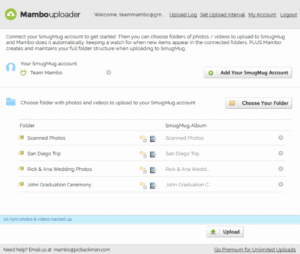-
Table of Contents
- Understanding the Importance of Formatting an SD Card
- Step-by-Step Guide to Format an SD Card Using a Mobile Device
- Common Issues and Troubleshooting Tips for SD Card Formatting
- Exploring Different Formatting Options for SD Cards on Mobile Devices
- Best Practices for Maintaining and Formatting SD Cards on Mobile Devices
- Q&A
Tagline: “Format your SD card effortlessly with your mobile device: follow these simple steps.”
Introduction: Formatting an SD card with a mobile device is a simple process that allows you to erase all the data on the card and prepare it for use. In this guide, we will provide you with step-by-step instructions on how to format an SD card using your mobile device.
Understanding the Importance of Formatting an SD Card
Understanding the Importance of Formatting an SD Card
In today’s digital age, where we rely heavily on our mobile devices to store and access important data, it is crucial to understand the importance of formatting an SD card. An SD card, or Secure Digital card, is a small storage device that is commonly used in smartphones, tablets, and digital cameras. It provides additional storage space for photos, videos, music, and other files. However, over time, an SD card can become cluttered with unnecessary files and data, which can lead to performance issues and even data loss. This is where formatting comes into play.
Formatting an SD card essentially erases all the data on the card and prepares it for future use. It creates a clean slate, allowing the card to function optimally and efficiently. By formatting the SD card, you can ensure that it is free from any corrupt files or errors that may hinder its performance. Additionally, formatting can help resolve compatibility issues between the card and your mobile device, ensuring seamless operation.
One of the primary reasons to format an SD card is to remove any unnecessary files or data that may be taking up valuable space. Over time, as you capture photos, record videos, and download files, your SD card can become cluttered with temporary files, duplicates, and other unnecessary data. This can not only slow down your device but also limit the available storage space. By formatting the SD card, you can reclaim this space and optimize your device’s performance.
Another crucial aspect of formatting an SD card is to prevent data loss. While formatting erases all the data on the card, it also helps identify and fix any potential errors or issues. These errors can occur due to file corruption, malware, or even physical damage to the card. By formatting the SD card, you can eliminate these errors and ensure that your data remains safe and secure.
It is important to note that formatting an SD card is a permanent action. Once you format the card, all the data on it will be irreversibly erased. Therefore, it is crucial to back up any important files or data before proceeding with the formatting process. This will ensure that you do not lose any valuable information.
Now that we understand the importance of formatting an SD card, let’s delve into the steps involved in formatting an SD card using a mobile device. The process may vary slightly depending on the operating system of your mobile device, but the general steps remain the same.
Firstly, insert the SD card into the SD card slot of your mobile device. Once inserted, navigate to the settings menu and locate the storage or memory option. Here, you will find the option to format the SD card. Tap on this option, and a warning message will appear, informing you that all data on the card will be erased. Confirm your decision to proceed with the formatting process.
The mobile device will then begin formatting the SD card. This process may take a few minutes, depending on the size of the card and the amount of data stored on it. Once the formatting is complete, you will receive a notification confirming the successful formatting of the SD card.
In conclusion, formatting an SD card is a crucial step in maintaining the performance and reliability of your mobile device. It helps remove unnecessary files, resolves compatibility issues, and prevents data loss. By understanding the importance of formatting and following the necessary steps, you can ensure that your SD card functions optimally and provides you with the storage space you need.
Step-by-Step Guide to Format an SD Card Using a Mobile Device
In today’s digital age, SD cards have become an essential tool for storing and transferring data. Whether you want to free up space on your SD card or prepare it for use with a new device, formatting is a crucial step. While many people are familiar with formatting on a computer, not everyone knows that it can also be done using a mobile device. In this step-by-step guide, we will walk you through the process of formatting an SD card using a mobile device.
Step 1: Insert the SD card into your mobile device
The first step is to insert the SD card into the appropriate slot on your mobile device. Most smartphones and tablets have a designated slot for SD cards, usually located on the side or back of the device. Make sure to insert the card properly to avoid any damage.
Step 2: Access the settings menu
Once the SD card is inserted, unlock your mobile device and navigate to the settings menu. The location of the settings menu may vary depending on the make and model of your device, but it is typically represented by a gear icon. Tap on the settings icon to proceed.
Step 3: Locate the storage option
Within the settings menu, you will find various options related to your device’s settings and configurations. Look for the option labeled “Storage” or “Storage & USB” and tap on it. This option allows you to manage the storage settings of your device, including formatting the SD card.
Step 4: Select the SD card
After tapping on the storage option, you will be presented with a list of storage devices connected to your mobile device. Look for the SD card option and tap on it to access the SD card settings.
Step 5: Format the SD card
Once you have selected the SD card, you will see a list of options related to its management. Look for the option labeled “Format” or “Format SD card” and tap on it. A warning message may appear, informing you that formatting will erase all data on the card. Make sure to back up any important data before proceeding.
Step 6: Confirm the formatting process
After tapping on the format option, a confirmation message will appear, asking you to confirm the formatting process. Read the message carefully and make sure you understand that all data on the SD card will be permanently deleted. If you are certain, tap on the “Format” or “Confirm” button to initiate the formatting process.
Step 7: Wait for the formatting to complete
Once you have confirmed the formatting process, your mobile device will begin formatting the SD card. The time it takes to complete the formatting process may vary depending on the size and speed of the SD card. During this time, it is important not to remove the SD card or turn off your mobile device.
Step 8: Formatting complete
Once the formatting process is complete, you will receive a notification indicating that the SD card has been successfully formatted. You can now use the SD card with your mobile device or any other compatible device.
In conclusion, formatting an SD card using a mobile device is a simple and straightforward process. By following these step-by-step instructions, you can easily format your SD card and ensure its optimal performance. Remember to back up any important data before formatting and exercise caution to avoid any accidental data loss.
Common Issues and Troubleshooting Tips for SD Card Formatting
Formatting an SD card with a mobile device is a common task that many users need to perform. Whether you want to clear the card of all data or resolve issues with its performance, formatting can be a useful solution. In this article, we will guide you through all the steps involved in formatting an SD card with your mobile device.
Before we delve into the steps, it is important to note that formatting an SD card will erase all the data stored on it. Therefore, it is crucial to back up any important files before proceeding with the formatting process. Once you have taken the necessary precautions, you can follow these steps to format your SD card.
Firstly, insert the SD card into the designated slot on your mobile device. This slot is usually located on the side or back of the device, depending on the model. Once the card is inserted, ensure that it is properly seated and secured in place.
Next, navigate to the settings menu on your mobile device. The location of the settings menu may vary depending on the operating system and device model. Look for the “Storage” or “Memory” option within the settings menu. Tap on this option to access the storage settings.
Within the storage settings, you should see a list of available storage devices, including your SD card. Tap on the SD card option to access its specific settings. Here, you will find various options related to the SD card, such as storage capacity and format.
To format the SD card, tap on the “Format” or “Format SD card” option. A warning message may appear, informing you that all data on the card will be erased. Confirm your decision to proceed with the formatting process.
The formatting process may take a few moments, depending on the size of the SD card and the speed of your mobile device. During this time, it is important not to remove the SD card or interrupt the formatting process, as it may result in data corruption or other issues.
Once the formatting process is complete, you will receive a notification confirming the successful formatting of the SD card. At this point, you can safely remove the SD card from your mobile device.
Formatting an SD card with your mobile device can help resolve various issues, such as slow performance or compatibility problems. It is a simple and effective solution that can be performed by any user, regardless of their technical expertise.
In conclusion, formatting an SD card with your mobile device is a straightforward process that can be completed in a few simple steps. By following the steps outlined in this article, you can easily format your SD card and resolve any issues you may be experiencing. Just remember to back up your data before proceeding, as formatting will erase all the data on the card.
Exploring Different Formatting Options for SD Cards on Mobile Devices
In today’s digital age, SD cards have become an essential tool for expanding the storage capacity of mobile devices. Whether you want to store more photos, videos, or apps, having a properly formatted SD card is crucial. Formatting an SD card with your mobile device is a simple process that can be done in just a few steps. In this article, we will explore different formatting options for SD cards on mobile devices, providing you with a comprehensive guide to ensure your SD card is formatted correctly.
Before we delve into the steps, it’s important to understand what formatting actually means. Formatting an SD card erases all the data stored on it and prepares it for use with your mobile device. It creates a file system that allows your device to read and write data to the card. There are different formatting options available, including FAT32 and exFAT, each with its own advantages and limitations.
To format an SD card with your mobile device, start by inserting the SD card into the card slot. Once inserted, go to the settings menu on your mobile device. The location of the settings menu may vary depending on the make and model of your device, but it is usually represented by a gear icon. Once you have located the settings menu, tap on it to open it.
Within the settings menu, you will find a variety of options. Look for the “Storage” or “Device Maintenance” option and tap on it. This will take you to a screen that displays information about the storage on your device, including the SD card. Locate the SD card option and tap on it to access the SD card settings.
Within the SD card settings, you will find several options, including the option to format the card. Tap on the format option to initiate the formatting process. A warning message may appear, informing you that all data on the SD card will be erased. If you have any important data on the card, make sure to back it up before proceeding.
After confirming that you want to format the SD card, your mobile device will begin the formatting process. This may take a few minutes, depending on the size of the card. Once the formatting is complete, you will receive a notification indicating that the process was successful.
It’s worth noting that some mobile devices may offer additional formatting options, such as the ability to choose between FAT32 and exFAT file systems. FAT32 is the most widely supported file system and is compatible with a wide range of devices. However, it has a maximum file size limit of 4GB. On the other hand, exFAT supports larger file sizes but may not be compatible with all devices.
In conclusion, formatting an SD card with your mobile device is a straightforward process that can be done in just a few steps. By following the steps outlined in this article, you can ensure that your SD card is properly formatted and ready for use with your mobile device. Remember to back up any important data before formatting, and consider the file system options available to choose the one that best suits your needs. With a properly formatted SD card, you can enjoy expanded storage capacity and make the most of your mobile device’s capabilities.
Best Practices for Maintaining and Formatting SD Cards on Mobile Devices
In today’s digital age, mobile devices have become an integral part of our lives. From capturing precious moments to storing important documents, our smartphones and tablets have become a repository of our memories and information. One of the key components that enable us to expand the storage capacity of our mobile devices is the SD card. However, to ensure optimal performance and longevity of these cards, it is essential to follow best practices for maintaining and formatting them.
Formatting an SD card is a process that prepares the card for use by creating a file system that the mobile device can recognize. It is important to note that formatting will erase all data on the card, so it is crucial to back up any important files before proceeding. Additionally, it is recommended to format the SD card periodically to maintain its performance and prevent potential issues.
The first step in formatting an SD card with a mobile device is to insert the card into the designated slot. Most smartphones and tablets have a slot specifically designed for SD cards, usually located on the side or back of the device. Once the card is inserted, the mobile device will detect it and prompt you to format it.
Before proceeding with the formatting process, it is advisable to check the manufacturer’s guidelines for your specific mobile device. Different devices may have slightly different steps or options for formatting an SD card. It is always best to follow the instructions provided by the manufacturer to ensure compatibility and avoid any potential issues.
Once you have confirmed the formatting process for your mobile device, the next step is to navigate to the settings menu. In the settings menu, you will typically find an option for storage or memory. Selecting this option will display the available storage devices, including the inserted SD card.
Tap on the SD card option, and you will be presented with various options related to the card, such as storage details, format, or eject. Select the format option, and a warning message will appear, reminding you that all data on the card will be erased. Confirm your decision to proceed with the formatting process.
The mobile device will then begin the formatting process, which may take a few minutes depending on the size of the SD card. It is important to ensure that the device remains powered on and undisturbed during this process to avoid any potential data corruption or damage to the card.
Once the formatting process is complete, the mobile device will notify you, and the SD card will be ready for use. It is recommended to restart the device after formatting the SD card to ensure that all changes are properly applied.
In conclusion, formatting an SD card with a mobile device is a straightforward process that can be done in a few simple steps. By following the manufacturer’s guidelines and periodically formatting the card, you can ensure optimal performance and longevity of your SD card. Remember to back up any important data before formatting and to restart the device after the process is complete. By adhering to these best practices, you can make the most out of your mobile device’s storage capacity and enjoy a seamless user experience.
Q&A
1. Insert the SD card into your mobile device’s SD card slot.
2. Open the Settings app on your mobile device.
3. Scroll down and tap on “Storage” or “Storage & USB” option.
4. Locate the SD card and tap on it.
5. Tap on the “Format” or “Format SD card” option and follow the on-screen instructions to complete the formatting process.To format an SD card with a mobile device, follow these steps:
1. Insert the SD card into the mobile device’s SD card slot.
2. Open the device’s settings menu.
3. Scroll down and tap on “Storage” or “Storage & USB” option.
4. Locate the SD card and tap on it.
5. Tap on the three-dot menu icon in the top-right corner.
6. Select “Format” or “Format as portable” option.
7. Read the warning message and confirm the formatting process.
8. Wait for the mobile device to format the SD card.
9. Once the formatting is complete, the SD card will be ready to use.
In conclusion, formatting an SD card with a mobile device involves inserting the card, accessing the storage settings, selecting the SD card, choosing the format option, confirming the process, and waiting for the formatting to finish.









